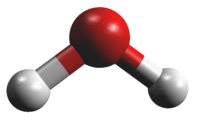|
The first entry of May 2012 was reevaluated.
Details are given in
(1) S. Muller, H. S. P. Müller, J. H. Black, et al.,
2016, Astron. Astrophys. 595, Art. No. A128.
The main differences are a slightly modified set
of spectroscopic parameters, rest frequencies for
the 11,0 – 10,1
transition near 620 GHz from astronomical
observations with ALMA. In addition, the entire HFS
pattern of stronger fine structure component of the
11,1 – 00,0
transition near 1115 GHz was shifted 5 MHz
up in frequency, whereas the weaker component near
1140 GHz was shifted 5 MHz down.
The first shift was suggested in
(2) D. A. Neufeld, J. R. Goicoechea, P. Sonnentrucker, et al.,
2010, Astron. Astrophys. 521, Art. No. L10,
whereas the second shift is an estimate from trial fits.
There are still no laboratory data available for
oxidaniumyl with microwave accuracy. However,
there have been two studies employing laser
magnetic resonance (LMR) with uncertainties of
order of 1 MHz. Usually, transition frequencies
extrapolated to zero field are not published.
One of the two articles provide such frequencies,
albeit only for the data obtained in the course of
their investigation. The zero field frequencies
appear to be reliable within the stated uncertainties.
Weighted averages were derived wherever applicable.
The data were taken from
(3) P. Mürtz, L. R. Zink, K. M. Evenson,
and J. M. Brown,
1998, J. Chem. Phys. 109, 9744.
In that work, additional LMR data were taken
from
(4) S. E. Strahan, R. P. Mueller, and R. J. Saykally,
1986, J. Chem. Phys. 85, 1252.
Only the calculated (sic !) frequencies for
the 111 – 000
transition were published in (1). These frequencies
were used in the current analysis with uncertainties
of 0.00006 cm–1.
Rovibrational data from observations of fundamental
transitions were also used in the fit. These were
reported by
(5) B. M. Dinelli, M. W. Crofton, and T. Oka,
1988, J. Mol. Spectrosc. 127, 1;
by
(6) P. R. Brown, P. B. Davies, and R. J. Stickland,
1989, J. Chem. Phys. 91, 3384.
by
(7) T. R. Huet, C. J. Pursell, W. C. Ho, B. M.
Dinelli, and T. Oka,
1992, J. Chem. Phys. 97, 5977;
and by
(8) R. Zheng, S. Li, S.-Y. Hou, G.-M. Huang,
and C.-X. Duan,
2008, Chin. Phys. B 17, 4485.
Furthermore, ground state combination differences
(GSCDs) were included. These were reported
by
(9) H. Lew,
1976, Can. J. Phys. 54, 2028;
and by
(10) T. R. Huet, I. Hadj Bachir, J.-L. Destombes,
and M. Vervloet,
1997, J. Chem. Phys. 107, 5645.
The data from (9) were kindly provided in
electronic form by B. M. Dinelli via P. Mürtz.
Some predicted uncertainties exceed 1 GHz;
they show up as 999.9999 in megahertz unit and as
0.03336 in inverse centimeter unit.
It is possible, though not certain, that the
predictions are sufficient for astronomical
purposes. Nevertheless, all predictions should be
viewed with at least some caution mainly because of
the slowly converging Hamiltonian, but also because
of some uncertainty about the extrapolation of
the LMR data to zero field. Considerable caution
is advised for transitions having predicted
uncertainties larger than 10 MHz.
At low temperatures, it may be necessary to discern
betweenortho-H2O+ and
para-H2O+.
The ortho states are described by
Ka + Kc
even, the para states by
Ka + Kc
odd. There are three times as many levels for
ortho-H2O+ than there are
for para-H2O+. Thus, for
transitions with unresolved 1H hyperfine
splitting the nuclear spin-weight ratio is 3 : 1
between ortho-H2O+ and
para-H2O+. However, for
transitions with resolved 1H hyperfine splitting
no non-trivial spin-statistics have to be considered.
The NKaKc = 101,
J + 1/2 = 2 is the lowest para state,
It is 20.8582 cm–1 above ground.
Separate
para and
ortho predictions are available along with separate
para and
ortho partition function values. These
entries have been truncated slightly more than the
regular entry. Even though matrix elements exist
which mix ortho and para states,
frequency shifts and spin-exchange is probably
negligible.
A ground state dipole moment value was calculated
ab initio by
(11) B. Weis, S. Carter, P. Rosmus, H.-J. Werner,
and P. J. Knowles,
1989, J. Chem. Phys. 91, 2818.
|
